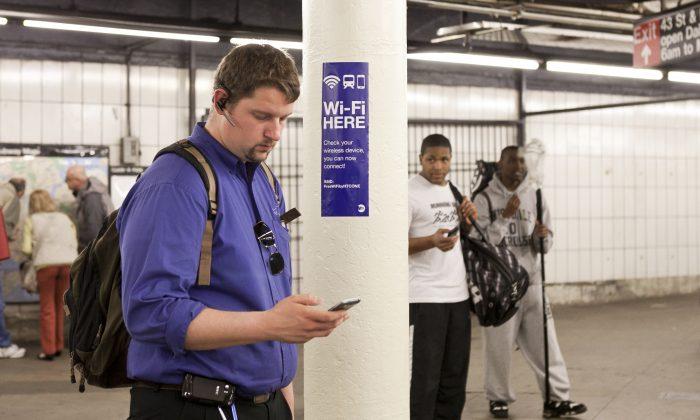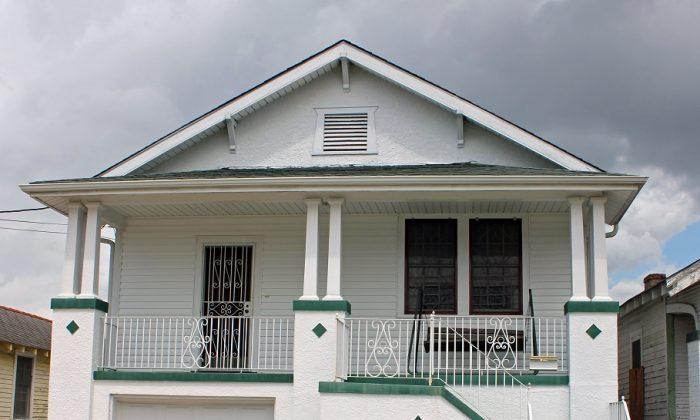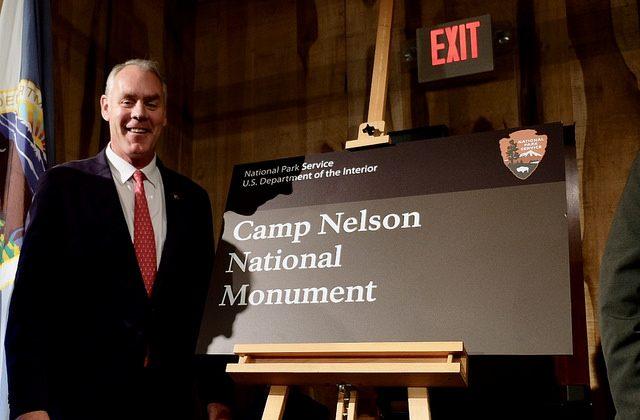NEW YORK—The days of walking in circles at the subway entrance to finish up that important business call are over for New Yorkers at 36 of the city’s busiest subway stations.
Transit Wireless expanded underground wireless data and cellular service on Thursday, allowing customers to take that call or send a tweet from the street to the subway platform without missing a step.
The service currently works on the subway platforms but not while riding the trains in-between stops. It is free for anyone to use.
“It will change the way we commute on subways going forward,” Tom DeVito, AT&T’s vice president and general manager for New York and New Jersey said from the Times Square station on Thursday. “We will transform the daily experience for 8.5 million commuters every day.”
Customers checked Facebook, Twitter, and news sites underground with ease, not realizing just how difficult it was to bring the service to them.
“This is really a project of extremes,” said Bill Bayne Jr., CEO of Transit Wireless, the company charged with installing the underground wireless system. “One of challenges you face when doing work in NYC is how do you incorporate technology in a city that was not built for it?”
New York City’s 110 year-old subway system was built at a time when technology was not even a word. Retrofitting the maze of tunnels, platforms, and stairwells to fit in the digital age took time, planning, and, well, technology.
Bayne said his team took plans from New York City Transit and made digital models which showed how the signals are predicted to maneuver around the maze of underground passageways, as well as physical objects such as the new countdown clocks. The metal objects are particularly troublesome for wireless signals.
“Air conditioning units, pipes, big concrete beams—all those things have to be taken into account so we can deploy the coverage so you maintain connectivity,” Bayne said.
After the models were made, the Transit Wireless team had to physically walk every square inch of each station to ensure what was on the plans was actually there and if any new things, such as the countdown clocks, had not yet made it to the plans.
Bayne estimated 30 percent of the time his team had to update the model.
Times Square
Times Square, one of the largest subways stations in the MTA system proved particularly challenging to wire. The station spans several blocks, with multiple entrances and several levels.
Bayne said he had 30 people working at that station alone, which took six weeks to complete instead of the normal three.
Crews worked from 10 p.m. to 5 a.m. so as not to impede subway service, and to avoid a lot of traffic. “In many neighborhood stations, that usually works, because people traffic decreases,” Bayne said, before adding with a chuckle, “There is never a quiet moment in Times Square.”
There are five wireless stations at Times Square, one for each line serviced.
High Tech Equipment
Customers can make phone calls as well as use data service, all on a Wi-Fi system. Customers to the wired subway stations will notice boxes and antenna extending from the ceilings, which carry the signal. The boxes look fairly simple, however their function is highly complex.
“We are deploying very sophisticated electronics in each station,” Bayne said.
New Yorkers checking their email or calling a friend from the platform will connect to the antenna as an RF signal. The signal travels through a cable and is then converted to a digital signal. The digital signal moves at lightning speed via fiber optic cables which have been laid throughout the subway system to the streets above. The fiber leads to data centers where the signal then goes to antenna for each of the four major wireless carriers, finalizing the connection.
Highly sensitive circuit boards and amplifiers make all of that happen, none of which can be exposed to the unpredictable elements of the New York City subway system. The sensitive equipment can’t take the extreme heat and humidity felt by riders in many stations during the grueling months of summer.
Dripping water from a rainy day, power-washing crews, or even someone throwing liquids, could damage the equipment, leaving spotty or no coverage.
Bayne and his team built protective boxes to keep the equipment sealed from the elements, and cool to prevent signal loss.
“New York City Transit has very specific standards on this,” Bayne said. “We are not inventing anything they have not experienced.”
Transit Wireless is contracted to retrofit the remaining 241 subways stations with wireless by 2018, however, officials on Thursday said they want the project complete by 2017. Phase II, dubbed “The Queens Phase” will include Grand Central, 34th Street Herald Square, and Bryant Park in mid-town Manhattan, and stations throughout Queens are expected to be complete by April of 2014.
“When you think about 2013, we all expect to be connected to voice and data and public safety,” Bayne said. “It has been a long time coming, but we have been able to overcome [obstacles] in deploying this technology in a very old system and we are excited to do that.”






Friends Read Free